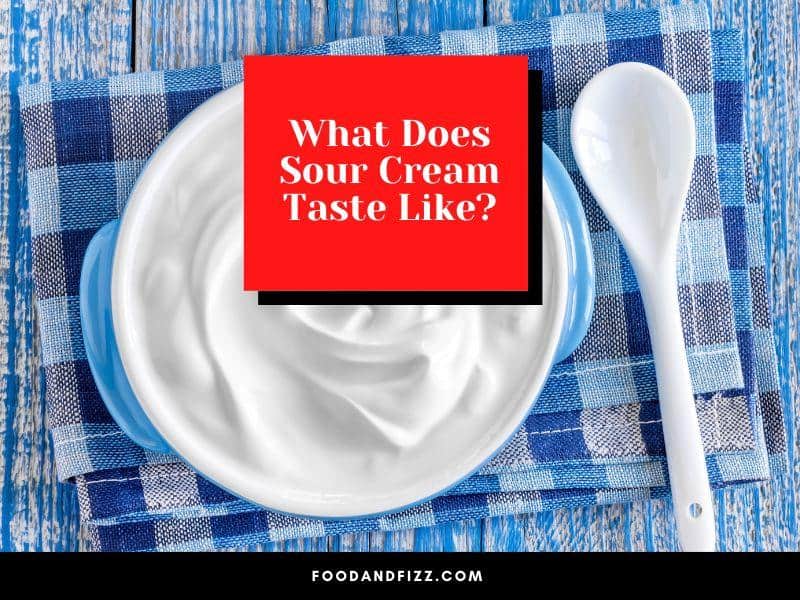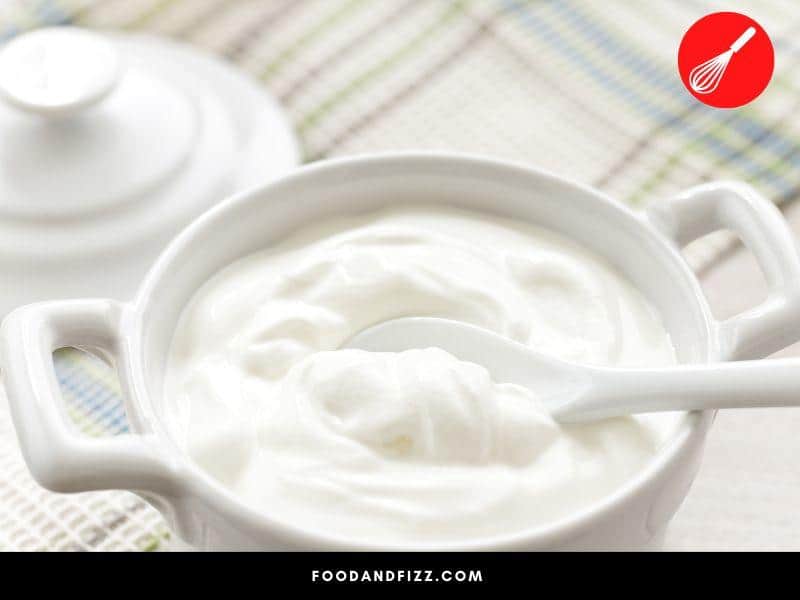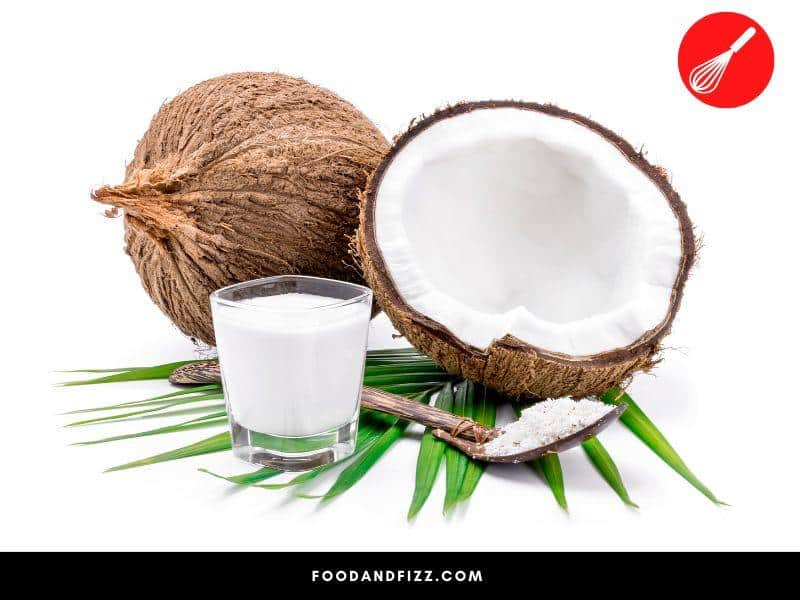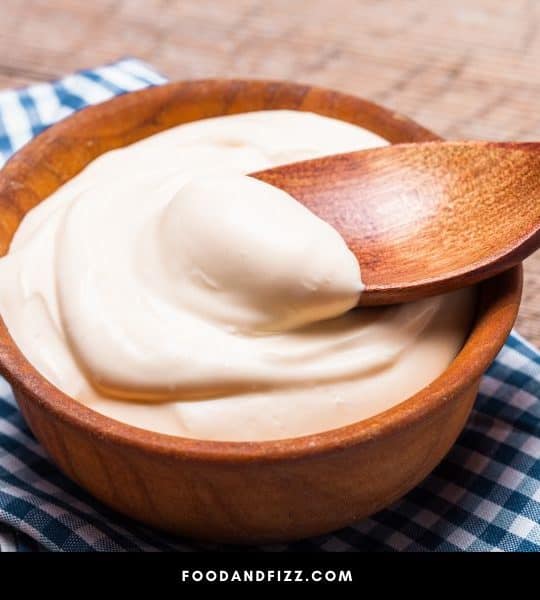If you’ve never had it before, sour cream is not likely to be at the top of your list of things to try if you judge it by name alone.
“Sour cream” doesn’t imply a very pleasant eating experience; however, sour cream is actually delicious and lends a subtle, pleasant tang to many sweet and savory recipes.
So, what does sour cream taste like?
What Does Sour Cream Taste Like?
Sour cream is a cultured dairy product that has a rich, creamy texture and a tart, tangy taste. It is made by adding lactic acid-producing bacteria to cream, which thickens it and makes it more acidic, giving it a characteristic slightly tart and sour taste. It is less sour than plain yogurt or Greek yogurt, but more acidic than crème Fraiche. In many culinary applications, yogurt and crème Fraiche make good substitutes for sour cream.

What is Sour Cream?
Sour cream is cream that’s been fermented and cultured with bacteria that produce lactic acid, which brings about its characteristic tart taste and makes it thicker and richer than regular cream.
It is said to have originated from Russia and Eastern Europe, where it is prominent in many recipes like soups and stews before immigrants brought it to America where it has since become a beloved ingredient for a variety of dishes such as baked potatoes, dips, sauces, salad dressings, meat, and vegetables.
Similar to the action of buttermilk, it is often also used in baking because of its acidity and ability to break down gluten, helping to produce tender and moist baked goods.
How is Sour Cream Made?
The very first versions of sour cream were probably made by letting milk sit out at room temperature and when the fat rose to the top (the cream), allowing bacteria to naturally sour it.
Why they think this would be a good idea to begin with is beyond me, but souring milk or cream probably has a lot to do with extending its shelf life.
The acidic environment of soured milk or cream slows down its rate of spoilage, something that for sure is important in the days of pre-refrigeration and pre-pasteurization.
In any case, thanks to the people who thought it would be a good idea to do it, the wonder that is sour cream was born.
Sour cream is actually named not for its taste (although the resulting product is an apt reflection of its name), but from the process employed in making it, called “Souring”.
Souring is a process of food preparation that entails the introduction of an acid to food with the intention of changing its physical and chemical properties.
It is a type of fermentation process that can be done either by adding the acid directly or by introducing bacteria that naturally produce the acids necessary to impart the desired physical and chemical change.
With this process in mind, we can say that Sour Cream can be made in two ways:
1. Cultured Sour Cream
Lactic-acid-producing bacteria (Streptococcus lactis, among others) are added to pasteurized light cream and allowed to inoculate at a temperature of 72°F.
The Lactic acid produced by the bacteria is what is responsible for the changing of the texture and the nature of the cream and is what lowers its pH, making it acidic and, therefore, tart and slightly sour.
Certain additives, stabilizers, and bulking agents may be added before packaging.
This is the process that’s typical for commercially-produced sour cream. The bacterial cultures are often controlled and properly monitored to ensure consistent quality in the sour cream across all production batches.
2. Acidified Sour Cream
Acidified sour cream is typically made by introducing an acid (typically lemon juice or vinegar) to the cream and allowing that acid to sit at a suitable temperature to work and create the chemical changes and impart the characteristic tart flavor to the cream.
This process is less common in commercially produced sour cream and is a much more common practice for those making their own at home.

What Does Sour Cream Taste Like?
Sour cream is rich and creamy and has a slightly tart and tangy taste. In describing its unique taste and texture, it is most often compared to crème Fraiche or plain yogurt, or Greek yogurt.
Sour cream tastes more tangy and sour than crème Fraiche and has a thinner consistency. In comparison to plain or Greek yogurt, though, sour cream is less tart and tangy but has a richer and fuller taste than yogurt.
I suppose we can think about it this way: in terms of taste and texture, sour cream falls somewhere in between crème Fraiche and plain or Greek yogurt.
In terms of how it is made, the process of making sour cream is actually more similar to how buttermilk is produced.
While sour cream starts off with cream inoculated with lactic acid-producing bacteria, buttermilk would start with low-fat or non-fat milk before inoculation.
This results in a product that is more liquid and watery than sour cream, but the general process is pretty much the same.
This is also the reason why you can make cultured sour cream at home by culturing it using store-bought buttermilk.
How to Use Sour Cream
Sour cream is a versatile ingredient in the kitchen. Some examples of where it can be used are:
- As a base for dips and salad dressings
- To dollop on top of vegetables, like in baked potatoes.
- To make creamier sauces for use in meat dishes. The acidity of sour cream imparts a unique flavor to finished meat sauces compared to heavy cream. It cuts the richness a little bit and cuts the sweetness heavy cream would normally add. (Read: “Heavy Cream vs. Sour Cream – Differences & Similarities”)
- Added to pancakes, scones, biscuits, and cornbread. Its acidity lends a unique and subtle tang to recipes and helps keep doughs tender and flaky.
- Added to baked goods like cakes, cheesecakes, and muffins, it provides moisture and richness while tenderizing them and inhibiting gluten formation.
Sour cream is definitely great to have in the kitchen because it can be used in both sweet and savory applications and lends a unique flavor and texture to whatever it is you are making.

Common Substitutions for Sour Cream
Sour cream is not that difficult to find in regular grocery stores, but if you find yourself in a pickle, you can use any of the following substitutes:
1. Buttermilk
As it is more liquid than sour cream, it might not work in all recipes especially used as a topping. But in baked goods, it would work in a very similar way. Use ¾ cup buttermilk for every cup of sour cream called for in the recipe.
2. Plain Yogurt or Greek Yogurt
Yogurt, especially Greek yogurt with a thicker consistency, is usually a one-for-one replacement for sour cream. They have a similar texture and taste profile. To know more about the taste of plain yogurt, check “What Does Plain Yogurt Taste Like?“
3. Crème Fraiche
Crème Fraiche is also very similar to sour cream, although it is a bit richer and thicker due to its higher fat content. Even so, it would work as a pretty much one-for-one substitute for sour cream in recipes, although the resulting flavor might not be as tangy.
4. Cream Cheese
The tanginess of cream cheese makes for a good sour cream substitute but since it is thicker, it needs to be thinned out a little bit before use. Cooks recommend that for every cup of sour cream required, six oz. of cream cheese may be used, thinned with one to two tablespoons of milk or water.
5. Mayonnaise
Like yogurt and crème Fraiche, it can also be used as a cup-for-cup replacement for sour cream. I once made a chocolate cake with mayonnaise as one of the ingredients, and it was tender and amazing!
6. Kefir
Kefir is fermented and cultured milk that’s thinner than yogurt and contains active cultures that contain healthy probiotics. It can be substituted one-for-one for sour cream, but because it is drinkable and has a thinner consistency, it is not ideal for use in toppings.
7. Coconut Milk
If you need a dairy-free substitute, you can use coconut milk as a one-for-one substitute for sour cream. Add a tablespoon of lemon juice or vinegar to every cup of coconut milk, leave to curdle for a little bit, and you are good to go.

8. DIY Sour Cream
And, of course, the last and maybe best substitute, in my opinion, is DIY sour cream, which is not that hard to make. You only need vinegar or lemon juice, and cream, and you can quickly make a substitute that will work for your recipes.
Is Sour Cream Healthy?
Sour cream can be added to a healthy diet reasonably and when prepared in health-promoting recipes.
It is a good source of Vitamin A and calcium, which promotes eye and bone health and muscle functioning. It helps with immunity, and because of its fat content, it also helps in the absorption of fat-soluble vitamins necessary for a lot of vital processes in the body.
That said, though, we shouldn’t keep snacking on sour cream or pour it over everything. It is a higher-fat food, the excess consumption of which is associated with increased cholesterol, blood pressure, and increased incidences of heart disease.
As with anything, moderation should be practiced in its consumption.

Probiotics in Sour Cream
Another argument for the health benefits of sour cream is the probiotic content, especially in cultured sour cream.
However, most commercially-produced sour creams are re-pasteurized after adding live cultures, killing the beneficial probiotics.
There are some brands, though, that add them back, so depending on the brand of sour cream you get, it may or may not have the added benefit of gut-friendly probiotics.
Conclusion to What Does Sour Cream Taste Like
Sour cream is a cultured dairy product with a slightly tart but creamy and rich taste. It is similar to yogurt and crème Fraiche but is unique in its own way.
A lot of substitutes exist in baking and cooking, which would yield similar results, but in certain uses, such as topping a baked potato, nothing would beat the taste of the real thing.
It isn’t really a huge problem, though, because sour cream is pretty much available everywhere, and it isn’t that difficult to make at home.
Sour cream is indeed a unique and interesting ingredient to add a unique tangy flavor to your recipes.
Frequently Asked Questions to What Does Sour Cream Taste Like
What is Sour Cream?
Sour cream is basically cultured and fermented cream that has a rich, creamy texture and a tart, tangy taste. It is made by adding lactic acid-producing bacteria to cream, which thickens it and makes it more acidic, giving it a characteristic slightly tart and sour taste.
Is Sour Cream Healthy?
Sour cream can be a good addition to a healthy diet in reasonable amounts, as it contains many fat-soluble vitamins and minerals that promote eye, bone, and muscle health. However, because it contains a higher fat content, it is best to exercise moderation in consuming it.
What Are the Best Sour Cream Substitutes?
Among the best substitutes for sour cream are plain yogurt or Greek Yogurt and crème Fraiche. In most recipes, they work as direct substitutes.

